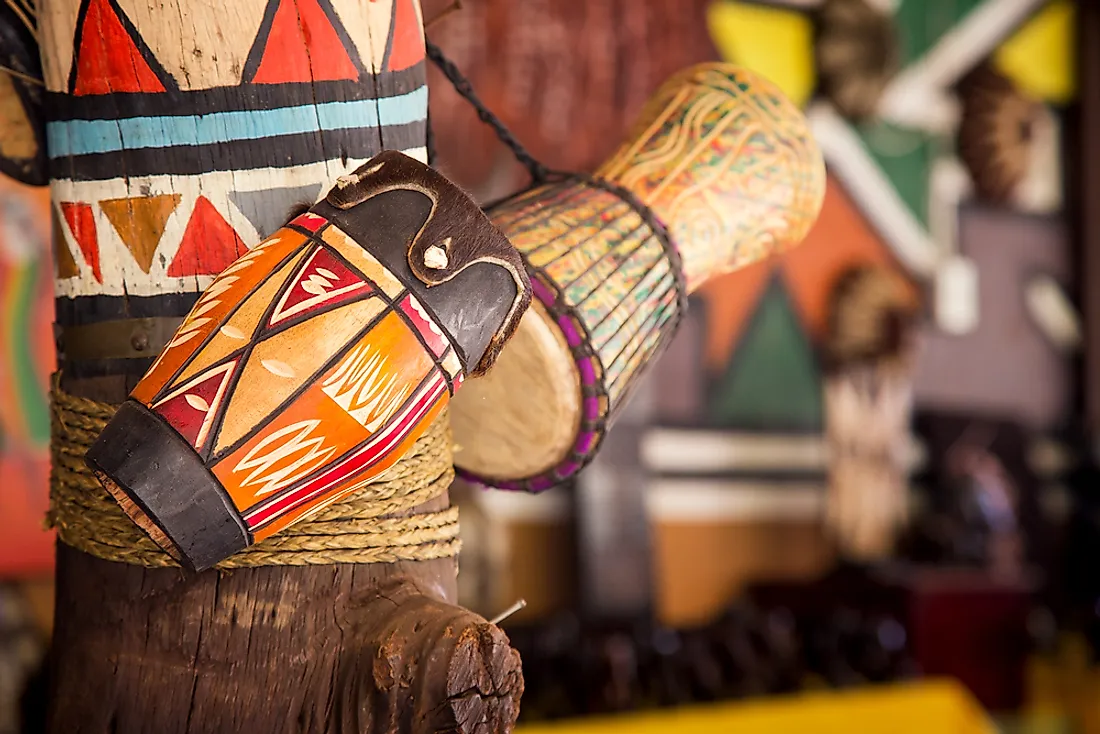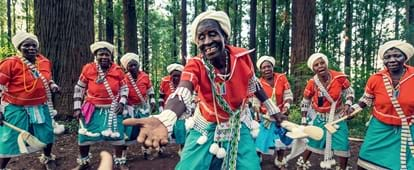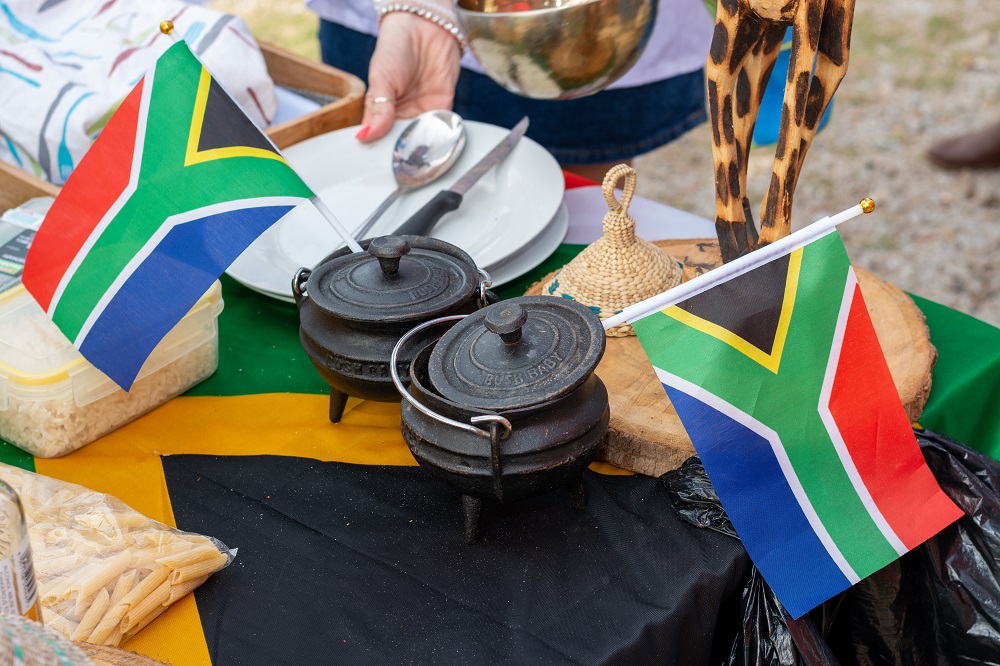South African Culture Today - Truths
South African Culture Today - Truths
Blog Article
Getting My South African Culture Today To Work
Table of ContentsGetting My South African Culture Today To WorkThe smart Trick of South African Culture Today That Nobody is DiscussingThe 20-Second Trick For South African Culture TodaySouth African Culture Today - The FactsWhat Does South African Culture Today Mean?The Ultimate Guide To South African Culture Today
An issue of significance in Zambian towns is the passing away of loved ones. All participants of the village placed cash, time and initiative together for the funeral of the deceased.Throughout the mourning duration; males stay outside your house and the ladies remain inside your home of the deceased. After discussing the deceased, the town walks to the location of burial to say their last goodbyes. Songs and dance is a really important element of the Zambian society. The different tribal units have their own dance forms; nevertheless, makishi is typical amongst all tribes.
The 8-Minute Rule for South African Culture Today
When it comes to songs, drums are made use of the most, with a variety of drumming events. In Zambia, bulk of individuals are Christian; Protestant and Roman Catholic. There are little groups of Muslims and Hindus, with the rest complying with regional indigenous tribal ideas.

South African heritage and culture is exceptionally diverse, and contains various groups of individuals that each have their own practices and ideas. Having such a variety of individuals and societies is what makes South Africa so distinct. In truth feeling of the phrase, we are a rainbow nation.
South Africa has roughly 3 hundred thousand Portuguese people staying in it. Making it the 7th on the list of nations with the most Portuguese people in it beyond Portugal. Portuguese is not only a society, yet it is also a language and a citizenship. Portuguese people originate from the country of Portugal in Europe, however, because of Portugal (like many various other countries in Europe) checking out the globe and conquering various other countries throughout the 15th 20th centuries, South Africa has what we call Portuguese South African's living in it.
The Ultimate Guide To South African Culture Today
Among the popular features of the topography is a plateau that covers almost 2 thirds of the center of the country. The plateau complicated rises toward the southeast, where it culminates in the Drakensberg range, component of a cliff that divides the plateau from the coastal locations. The Drakensburg includes Champagne Castle, the highest possible peak in the country.
The area north of the Witwatersrand, called the bushveld, inclines downward from eastern to west toward the Limpopo River, which forms the international boundary. The western section of the plateau, the middleveld, additionally descends in the direction of the west and varies in elevation between the highveld and bushveld. Between the Drakensburg and the eastern and southern shoreline, the land descends to the sea.
Nearer the shore there is a low-lying plain called the eastern lowveld. Southwest of the plateau the country comes to be gradually much more arid, paving the way to the stony desert of the Great Karroo, surrounded on the east by the reduced, better sprinkled plateau of the Little Karroo. Dividing the completely dry southerly interior from the sandy littoral of the southerly shore and West Cape visit their website is one more range, the Langeberg.
The Of South African Culture Today
The nation's racially, ethnically, and politically divided background has produced nationwide and subnational signs that still function as signs of the country, and others symbols that are accepted just by certain teams. The monuments to white inhabitant conquest and political supremacy, such as the Afrikaner Voortrekker ("pioneer") Monument in Pretoria and the Rhodes Monument recognizing the British colonial realm building contractor and Cape head of state Cecil Rhodes, remain sectarian signs.
The very first contemporary residents were the San ("bushman") hunter-gatherers and the Khoi ("Hottentot") peoples, that rounded up livestock (South African culture today). The San might have existed for thousands of years and left proof of their existence in thousands of ancient cave paints ("rock art"). Bantu-speaking clans that were the ancestors of the Nguni (today's amaZulu, amaXhosa, amaSwazi, and vaTsonga individuals) and Tswana-Sotho language groups (today's Batswana and Southern and Northern Basotho) migrated below eastern Africa as early as the fifteenth century

The two former republics of the Orange Free State and Transvaal (South African Republic) were developed by Afrikaner settlers who beat and dispossessed the Basotho and Batswana. Lesotho would certainly have been by force incorporated right into the Orange Free State without the expansion of British defense in 1869. The best marriage of the nation resulted from the South African Battle (18991902) between the British and both Afrikaner republics, which reduced the nation to mess up at the beginning of the twentieth century.
Afrikaners traditionally considered themselves the just true South Africans and, while approving full citizenship to all homeowners of European descent, rejected that standing to people of color till the democratic change of 1994. British South Africans preserve a sense of social and social connection to Great Britain without damaging their identity as South Africans.
The Facts About South African Culture Today Uncovered
The variety and fragmentation within ethnic groups and the equilibrium of tensions in between those groups during the twentieth century protected against interethnic civil dispute. While intergroup tensions over resources, privileges, and political prominence remain, those problems are as likely to match Zulu against Zulu as Zulu against Xhosa or African against Afrikaner.
From colonial India, British merchants and managers brought the curved metal decorative roofs and slim lace work columns that still represent the verandas of homes in the areas and cities throughout the country. Holy places contribute an important building element also in the tiniest towns. Along with the rising steeples and timeless stonework of Afrikaans Dutch Reformed churches, Anglican churches, synagogues, mosques, and Hindu shrines provide variety to the spiritual architectural scene.

Slaughtering and the brewing of typical grain beer are essential in Our site securing the participation and goodwill of the ancestors that are taken into consideration the guardians of good luck, success, and well-being. Indian areas preserve their native culinary customs and use them on Islamic and Hindu routine and ceremonial celebrations. Afrikaners and Coloured people collect at weekend breaks and unique occasions at multifamily barbecues called braais, where area bonds are strengthened.
Since this was the key economic venture of both black Africans and white homesteaders, dispute between those groups fixated the possession of grazing land and animals. In 1867, the biggest ruby deposits worldwide were discovered at Kimberley in the west main location. The wide range from those fields helped finance the exploitation of the greatest gold coral reef on the planet, which was found on the Witwatersrand in 1886.
7 Simple Techniques For South African Culture Today
This brought about misconceptions and calculated misstatement in the negotiations of white settlers and federal government officials with African principals throughout the colonial duration (South African culture today). In the facility of African reserves, some facets of public and chiefly "tribal count on" land tenure were preserved, and also in white country areas, kinds of public period were still index practiced in areas with African neighborhoods
After the autonomous improvement of 1994, programs for land restitution, redistribution, and reform were set up, yet development has actually been slow. The white minority still manages eighty percent of the land. In the wake of agricultural land intrusions in Zimbabwe, the Division of Land Affairs has vowed to speed land redistribution.
Report this page